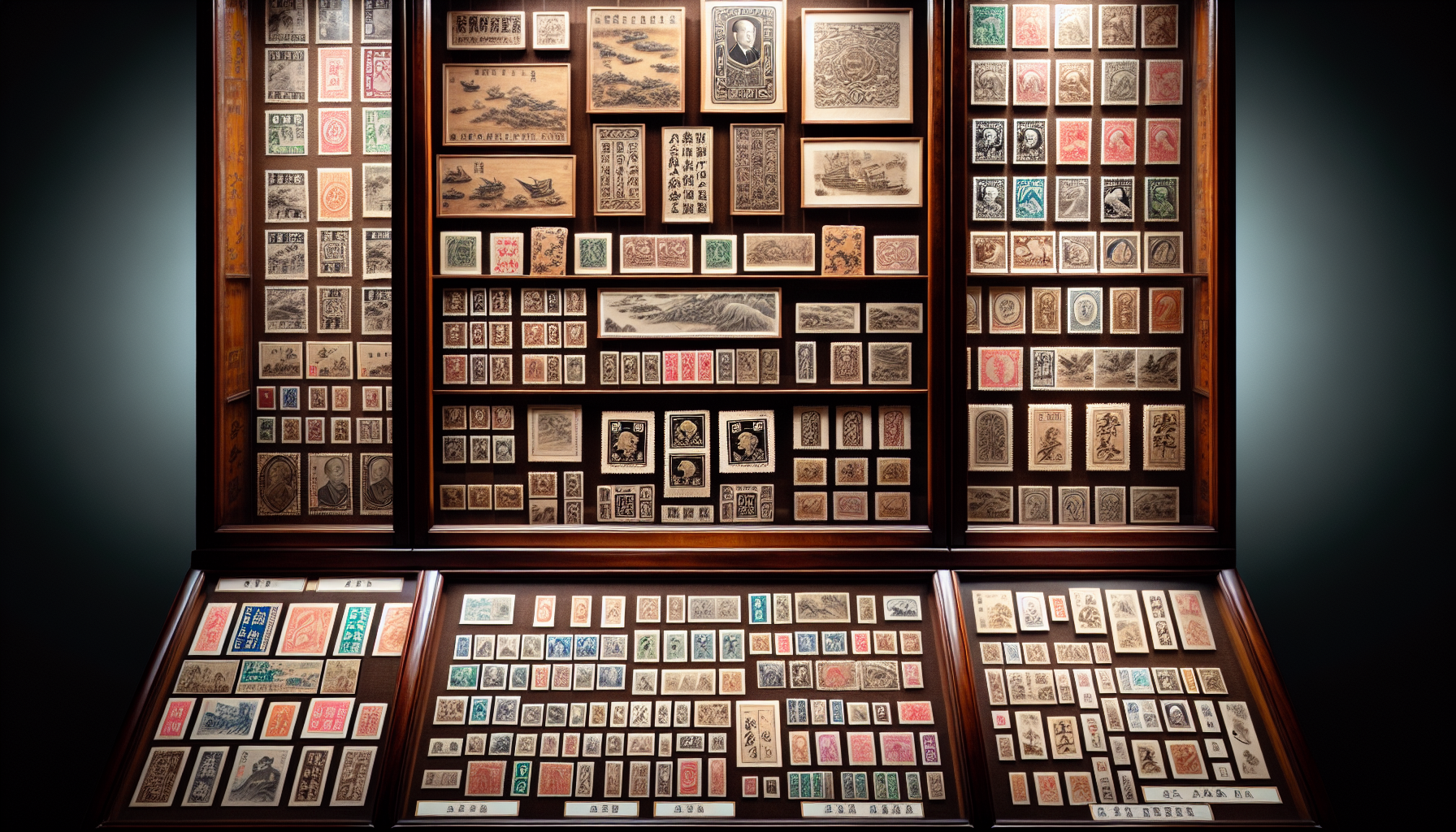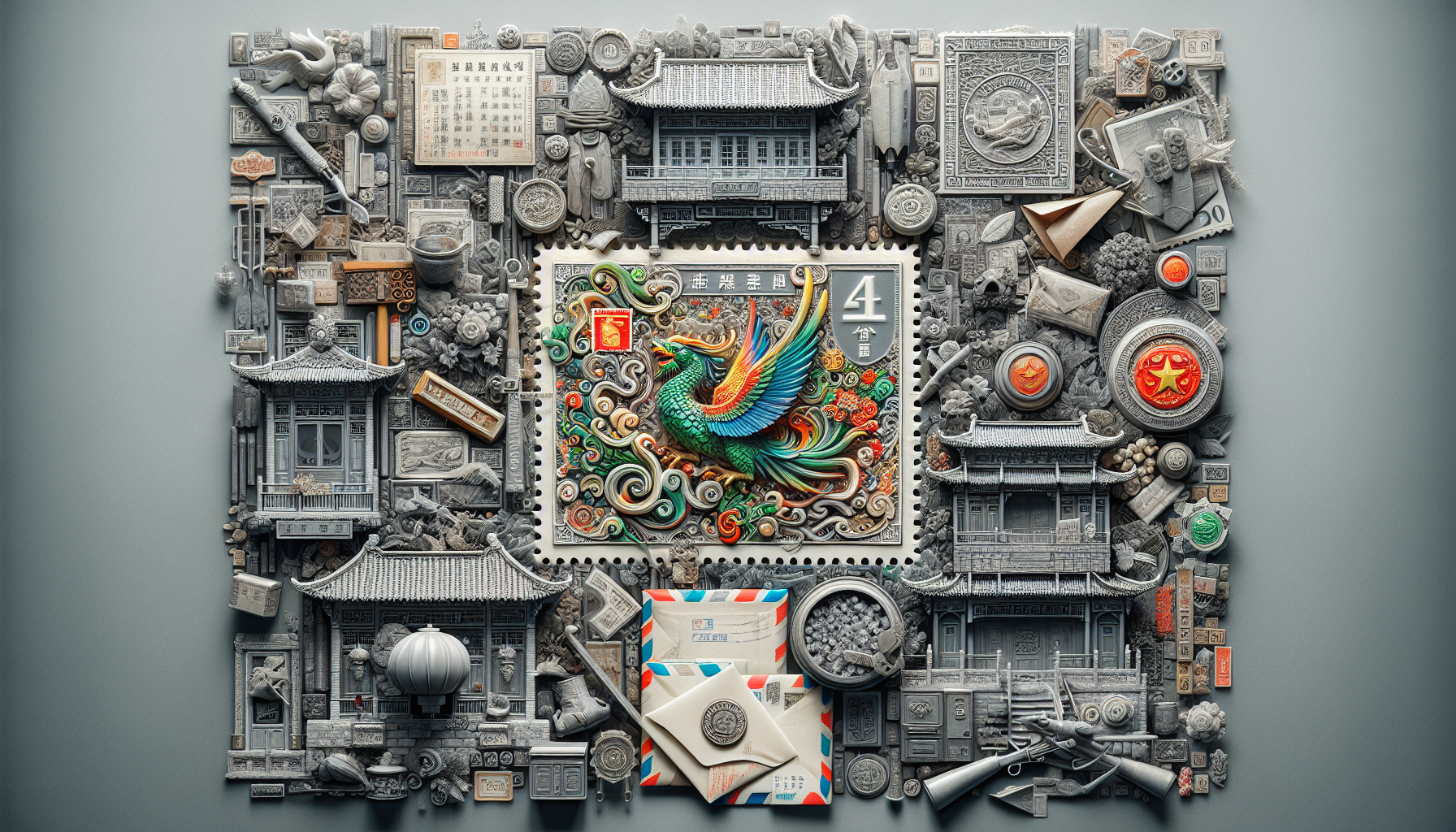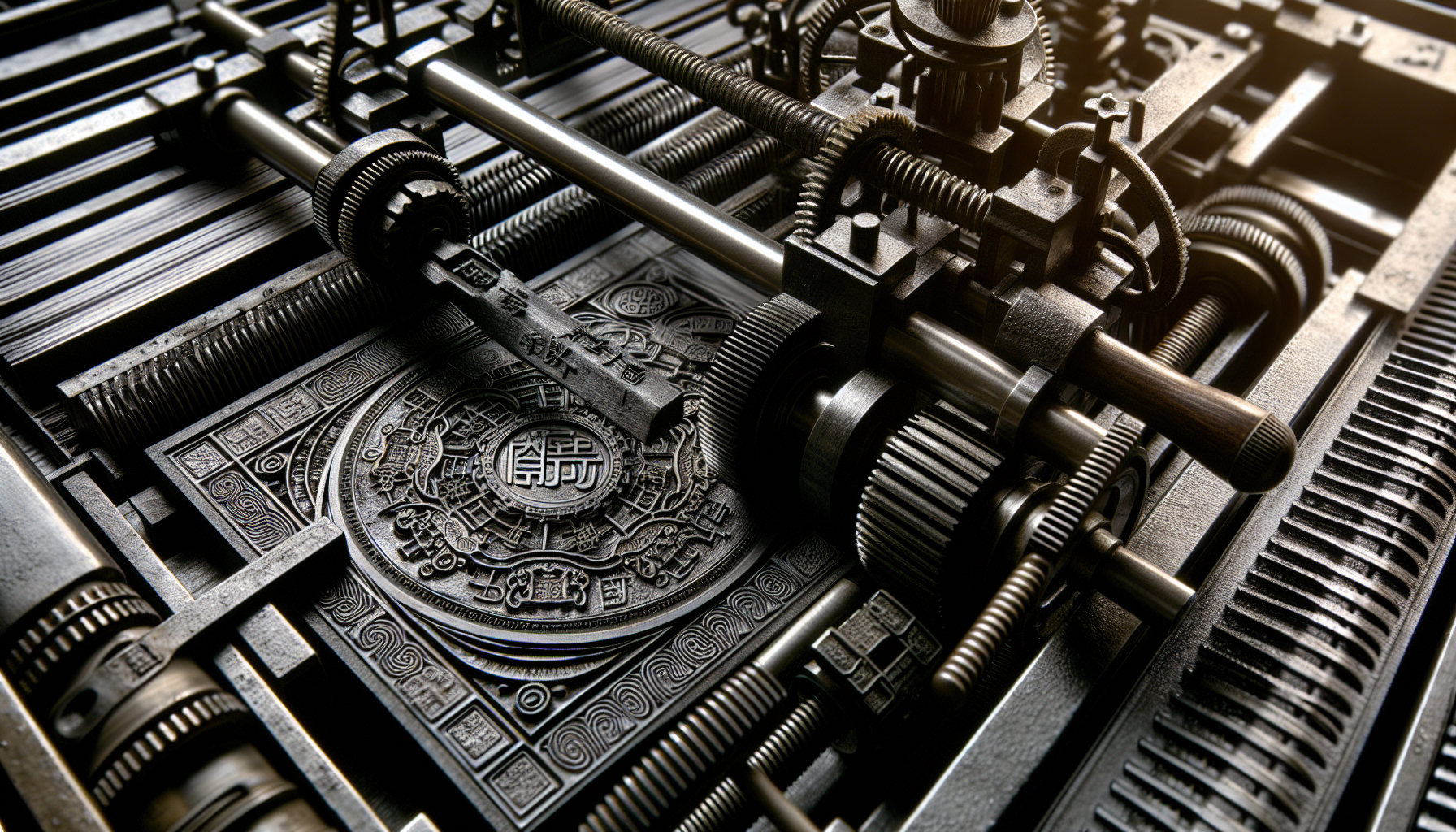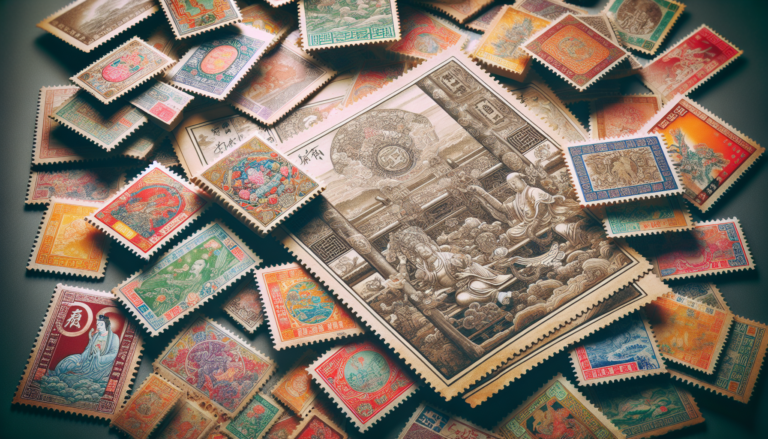Discover the fascinating universe of Chinese stamps , true witnesses to the history and culture of China. Since their appearance at the end of the 19th century, these small works of art have captivated collectors and enthusiasts around the world. Immerse yourself in the rich history of China stamps , explore their cultural meaning, understand the techniques behind their manufacture, and discover the international enthusiasm they arouse today. This journey through postal art is both cultural and artistic, and why they are prized as collectibles .
Chinese stamp history
The epic of Chinese stamps began in 1878, an era when China was still under the authority of the Qing dynasty. It was that year that the first stamps appeared, marking the start of a new era for the Chinese postal system . These stamps, called "tiananmen", decorated with patterns symbolizing the nation, quickly attracted the attention of collectors. Indeed, not only were they practical for sending the mail, but they also wore an indisputable cultural and historical meaning.
Each new stamp program reflects the political climate and the cultural aspirations of their time. The Republic of China , established in 1912 after the overthrow of the Qing dynasty, highlights a series of stamps celebrating national unity and often taking the theme revolutionary heroes and socio-economic reforms.
- 🗓️ 1878: First stamp of stamps under the Qing dynasty.
- 🌟 1912: Introduction of new reasons under the Republic of China.
- 🚩 1949: Establishment of the People's Republic of China and stamp reinvention for political purposes.
In 1949, with the emergence of the People's Republic of China , stamps took on a new dimension as propaganda tools. Under the influence of the Chinese Communist Party, they become instruments to glorify the ideals of the government, often illustrating themes such as industrial progress, anti-imperialist struggle and socialist propaganda.

Political dynasties and changes
Each political transition period in China affected the design and use of stamps. Under pressure from civil wars and reforms, stamps have become mirrors in social and political contexts, reflecting the intense transformations of China. For example, during the cultural revolution of the 1960s to 1970, stamps often represented emblematic figures of the Communist Revolution, such as Mao Zedong and party workers.
Here is a table summarizing some of the major changes :
| Era | Stamp characteristics |
|---|---|
| Qing dynasty (1878-1912) | National symbols, Chinese dragon, traditional patterns |
| Republic of China (1912-1949) | National heroes, revolution, unification |
| People's Republic of China (1949-present) | Communist propaganda, modern monuments, political figures |
Cultural and artistic meaning
Chinese stamps are not simple ways to free up letters; They are windows open to the soul of Chinese culture. Each drawing, each color and each effigy are chosen to capture a part of the tradition or the history of the country. For example, pandas images, breathtaking landscapes like the Great Wall, or historical figures such as Confucius, allow stamps to tell captivating stories about a country rich in cultural diversity.
Many Chinese stamps honor oriental philosophical concepts such as wisdom, bravery and beauty of nature. By thus proceeding, these stamps are not content to be collectibles; They become visual representatives of values dear to China and its diaspora.
- 🐼 Emblematic animals: such as panda, symbol of peace.
- 🏯 Historical iconography: like the Great Wall and Buddhist temples.
- 👨🏫 Famous people: Confucius, revolutionary heroes and literary figures.
It is not uncommon to see traditional Chinese festivals and national celebrations illustrated on stamps, because these moments are crucial in maintaining Chinese cultural identity through the ages.
Themes and patterns: a reflection of Chinese society
The themes addressed on Chinese stamps are deeply anchored in the values and traditions of China, often marked by an intense symbolism. For example, the Chinese zodiac cycle, illustrating a new animal every year, is a recurring theme that fascinates both local and international collectors.
Each of these stamps is a real masterpiece that stirs up the passion of philatelic collections , transforming each board into a painting of history. Due to their meaning and their rarity , some of these stamps have become real legends among the pomegranates of philately .
The patterns chosen from Chinese stamps can thus be perceived as a dialogism between the ancient history of China and its aspiration to a glorious future. These artistic conceptions invite collectors to understand the depth of traditions and modernity of China. Remember that Pascal bought your China stamps on 0473 444 706 💰
Chinese stamp manufacturing techniques
The creation of Chinese stamps is a meticulous process that requires exceptional expertise and detail attention. Historically, the printing methods used for stamps range from lithography to modern digital printing techniques, each method contributing in a distinct manner to the unique aesthetics of stamps.
The first Chinese stamps, for example, often used the technique of engraving in-size size, where the patterns were engraved directly on the printing plate, allowing the application of rich textures and fine details. Today, with technological advances, innovative techniques such as offset printing has simplified the process while increasing the quality of the final image.
- 🖌️ Douce size engraving: allowing complex details.
- 🎨 Offset printing: ideal for large -scale productions.
- 🔍 Digital techniques: increasing precision and quality.

Materials used in the manufacture of stamps
The materials used in the manufacture of China stamps have also evolved, going from traditional paper to special materials designed to withstand time and alterations. This choice of materials is crucial not only for sustainability but also for the artistic integrity of the stamp .
The inks used are often specifically designed to maintain bright colors and resist discoloration, as well as even that even the collections of rare stamps retain their shine for future generations. In addition, certain limited editions can use processes such as embossing, bringing a tactile dimension to the art of philately .
The table below gives an overview of the typically used materials:
| Material | Use | Benefits |
|---|---|---|
| High quality paper | Basic support | Sustainability |
| Discoloration resistant inks | Printing of patterns | Color longevity |
| Embossing processes | Limited editions | Textured 3D effect |
Philately around the world
Philately is a term that designates the collection and study of stamps, an activity that has grown on a global scale with the development of postal systems. If the first stamps appeared in Great Britain with the famous "Penny Black", Chinese stamps were quick to make a place of choice in this area thanks to their cultural richness and their aesthetic appeal.
The comparison between Chinese philately and that of other nations reveals a multitude of cross influences, but also a deep specificity of Chinese stamps. Many international collectors bear witness to the undeniable appeal of the patterns, colors and methods of demonstrating history and national pride.
- 🌍 Diversity of patterns: Each country has its particularities, China often includes national symbols.
- ⚖️ Rare criteria: criteria like the state, the year of emission, and the theme influence the value of stamps.
- 📚 Educational influence: stamps can tell a story or teach cultural lessons.
Influence of Chinese philately internationally
The popularity of Chinese stamps on the international scene has given rise to a marked enthusiasm, holding both neat aesthetics and the powerful symbolism conveyed by these stamps. Today, collectibles go beyond borders and captivate various target audiences, art historians with philatelists .
The growing presence of Chinese stamps in international auctions and exhibitions is a clear indicator of China’s growing influence in the philatelic field. Some rare stamps identified among the most precious have become exceptional symbols in the world of the collection.
Collection and Chinese stamp market
Over time, the collection of Chinese stamps has evolved towards a flourishing market. The global stamp market is booming, and the ancient and rare stamps from China are popular for their captivating history and their unique aesthetics.
This market is fueled by a basis of passionate collectors who are devoted to the acquisition of these philatelic treasures. The criteria for determining the value of the stamps include their rarity, their state of conservation, their theme, and of course, their demand among collectors around the world.
- 🔍 Rarity: The rarity of a stamp is one of the main factors of its value.
- 📈 Storage state: stamps well preserved with intact colors generally have greater value.
- 🌟 Theme: popular themes such as famous festivals and people increase their appeal.
Famous stamps such as the "small red dollar", known for being one of the rarest, often reach impressive sums in public and private auctions, illustrating the importance of having an invaluable piece of history.
The table below lists some examples of rare stamps , their characteristics and their estimated values:
| Stamp | Features | Estimated value 💰 |
|---|---|---|
| Red dollar | Issued in 1897, Qing dynasty | USD 6.9 million |
| Panda of 1985 | Limited series, emblematic species | USD 300,000 |
| Souvenir of the Revolution | 1949, the first RPC series | USD 500,000 |
Educational and historical importance
In addition to their collection value, Chinese stamps have significant educational importance. They serve as vectors of knowledge, providing clues to historical events, cultural practices and social developments in China. Teachers and history enthusiasts find ideal educational tools in them to revive the past to current generations.
For example, the use of rare stamps in classrooms and museums helps to illuminate different stages of the evolution of China and presents a unique perspective on the development of Chinese society. Even through modern initiatives, Chinese philately continues to play a key role in raising awareness of history and culture.
- 🎓 Educational tools: helping the teaching of history and culture.
- 🏛️ Presentations in museums: exhibitions of stamps important for public education.
- 🌐 Modern initiatives: educational projects around philatelic collections.
Questions Fair (FAQ)
- 🤔 Why are Chinese stamps so precious?
- Chinese stamps are prized for their unique combination of historical, cultural and artistic meanings, as well as for their rarity.
- 🤷 How do we assess the value of a Chinese stamp?
- The value is determined by scarcity, the state of conservation, the theme and demand among collectors.
- 💸 Where can we buy Chinese stamps?
- The stamps can be purchased during auctions, from specialized merchants and online on collection platforms.
- 📚 Are Chinese stamps used in education?
- Yes, they are often used as educational tools to teach Chinese history and culture.





